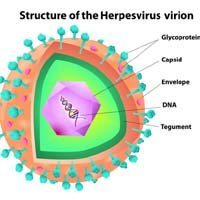The Peritoneal Cancer Index in Mesothelioma Prognosis

The peritoneal cancer index is a valuable prognostic tool and should be considered in mesothelioma treatment planning.
That is the word from a group of Finnish cancer researchers. They analyzed twelve years of data on peritoneal mesothelioma in their country.
Mesothelioma patients with a higher peritoneal cancer index had a worse prognosis than those with a lower PCI. The group says cancer doctors ought to be including the PCI in their decision-making for people with peritoneal mesothelioma.
What is the Peritoneal Cancer Index?
Peritoneal mesothelioma makes up about a fifth of all mesothelioma cases. It grows on the peritoneum, a membrane that surrounds the abdominal organs. As cancer spreads, tumors can show up in other areas inside the peritoneal cavity.
The Peritoneal Cancer Index or PCI is a way for doctors to measure how widespread these tumors are. The more confined a patient’s mesothelioma is, the lower their PCI score.
To estimate a patient’s PCI, doctors imagine that the peritoneal cavity has thirteen different regions. Using MRI and/or CT scans, they measure the size of the largest tumor in each of the 13 regions. They use those numbers to come up with a peritoneal cancer index score.
Doctors can use the PCI to plan for surgery and other mesothelioma treatments. PCI can help determine if a mesothelioma patient is a candidate for CRS surgery with HIPEC.
The PCI and Mesothelioma Prognosis
Researchers with the University of Eastern Finland and Helsinki University directed the new analysis. It included all Finnish peritoneal mesothelioma patients diagnosed between 2000 and 2012.
The team gathered additional clinical and outcome data from the Finnish Cancer Registry, the Workers’ Compensations Center, and Statistics Finland. A radiologist examined the CT and MRI data for each patient to determine their peritoneal cancer index score.
The median PCI score was 25. The team determined that mesothelioma patients with a peritoneal cancer index of 19 or lower had the best outcomes and survived the longest. Those with a PCI equal to or higher than 30 had the shortest survival.
“Our study indicates that radiological PCI is prognostic in malignant peritoneal mesothelioma and should be assessed during radiographic workup and integrated into clinical decision-making,” writes lead author Silja Salo of the Institute of Clinical Medicine at the University of Eastern Finland.
An American study earlier this year found MRI was better than CT for determining PCI in peritoneal mesothelioma patients.
That study included nearly 500 patients. It showed that doctors were more likely to be able to remove all traces of cancer in patients with a PCI below 15.
Source:
Salo, SAS, et al, “Prognostic role of radiological peritoneal cancer index in malignant peritoneal mesothelioma: national cohort study”, August 6, 2020, Scientific Reports, https://www.nature.com/articles/s41598-020-70044-8
Lee, RM, et al, “What is the Optimal Preoperative Imaging Modality for Assessing Peritoneal Cancer Index? An Analysis From the United States HIPEC Collaborative”, December 12, 2019, https://www.clinical-colorectal-cancer.com/article/S1533-0028(19)30483-9/fulltext





